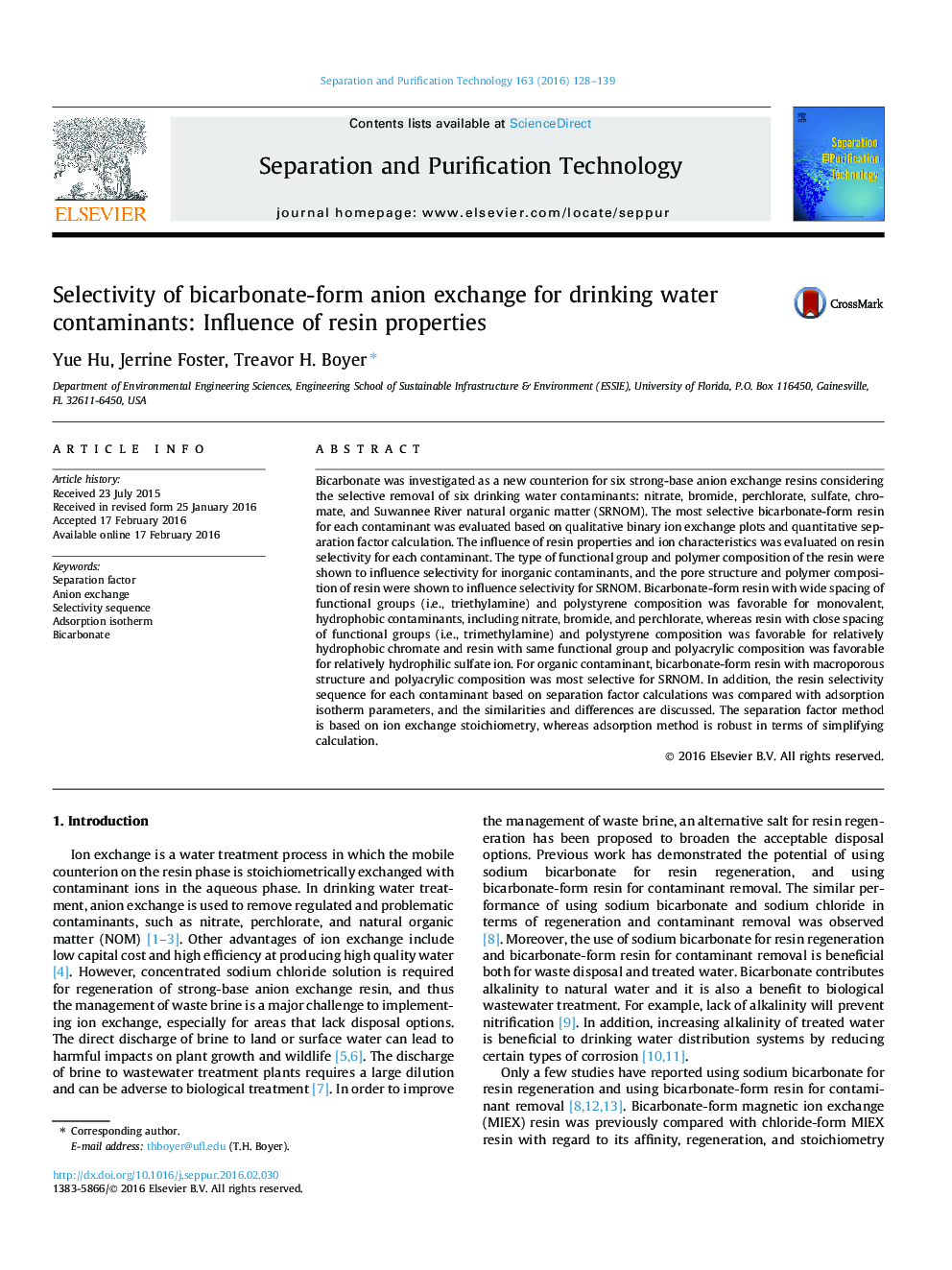| کد مقاله | کد نشریه | سال انتشار | مقاله انگلیسی | نسخه تمام متن |
|---|---|---|---|---|
| 640085 | 1456957 | 2016 | 12 صفحه PDF | دانلود رایگان |

• Selectivity of resin was influenced by functional group, polymer, and contaminant ion.
• Selectivity sequence for monovalent contaminants was perchlorate > nitrate > bromide.
• Selectivity sequence for divalent contaminants was chromate > sulfate.
• Selectivity sequence via separation factor generally agreed with Langmuir model.
Bicarbonate was investigated as a new counterion for six strong-base anion exchange resins considering the selective removal of six drinking water contaminants: nitrate, bromide, perchlorate, sulfate, chromate, and Suwannee River natural organic matter (SRNOM). The most selective bicarbonate-form resin for each contaminant was evaluated based on qualitative binary ion exchange plots and quantitative separation factor calculation. The influence of resin properties and ion characteristics was evaluated on resin selectivity for each contaminant. The type of functional group and polymer composition of the resin were shown to influence selectivity for inorganic contaminants, and the pore structure and polymer composition of resin were shown to influence selectivity for SRNOM. Bicarbonate-form resin with wide spacing of functional groups (i.e., triethylamine) and polystyrene composition was favorable for monovalent, hydrophobic contaminants, including nitrate, bromide, and perchlorate, whereas resin with close spacing of functional groups (i.e., trimethylamine) and polystyrene composition was favorable for relatively hydrophobic chromate and resin with same functional group and polyacrylic composition was favorable for relatively hydrophilic sulfate ion. For organic contaminant, bicarbonate-form resin with macroporous structure and polyacrylic composition was most selective for SRNOM. In addition, the resin selectivity sequence for each contaminant based on separation factor calculations was compared with adsorption isotherm parameters, and the similarities and differences are discussed. The separation factor method is based on ion exchange stoichiometry, whereas adsorption method is robust in terms of simplifying calculation.
Figure optionsDownload as PowerPoint slide
Journal: Separation and Purification Technology - Volume 163, 11 May 2016, Pages 128–139